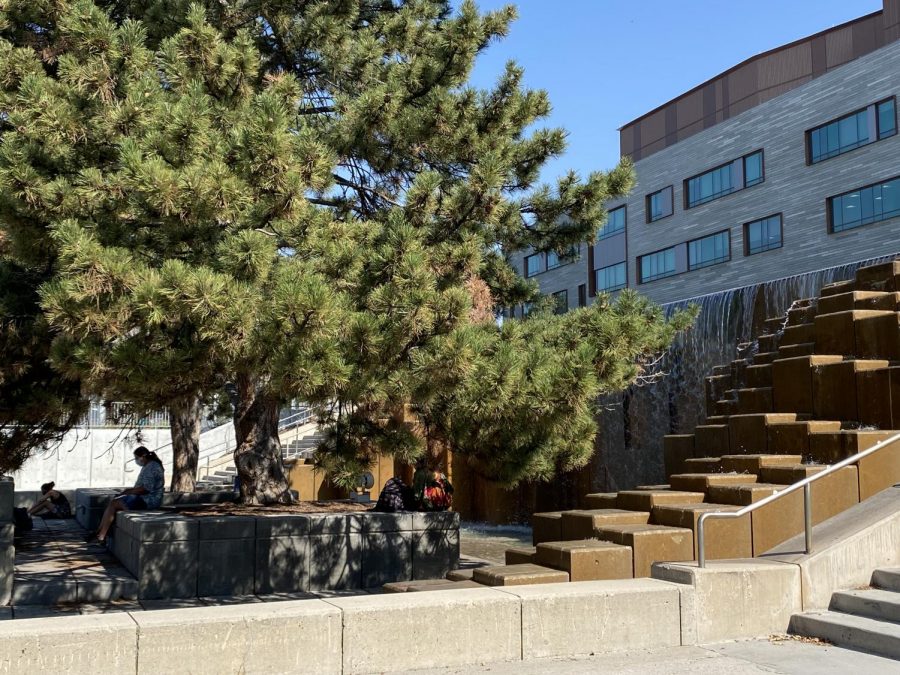Utah FORGE Continues Groundbreaking Research
Students studying on campus in front of Gardner Commons. (Photo by Paige Gardner | The Daily Utah Chronicle)
March 21, 2022
A University of Utah research group is making big waves in the renewable energy field.
Utah Frontier Observatory for Research in Geothermal Energy competed with the likes of University of California, Berkeley and Sandia National Laboratories to win the Department of Energy’s largest grant for geothermal energy. The groundbreaking research that won FORGE the grant is taking place in the small town of Milford, Utah, in Beaver County.
“Basically, each of us was given $10 million to drill a well,” said Joseph Moore, the project manager and principle investigator of FORGE. He has been in this role since 2014, four years before they were awarded their DOE grant.
FORGE was awarded the grant once they demonstrated that their project was effective and had low environmental impact. The FORGE lab poses no threat to endangered species and does not contaminate groundwater, according to Moore.
A geothermal plant works by pumping water into a fracture in the ground, deep enough for the water to be heated by the Earth. The newly heated water rises and can then be used for heating or generating electricity.
The fact that it can be used directly for heating makes it especially desirable as an energy source. Gardner Commons already makes use of geothermal energy to heat the entire building.
Geothermal energy has benefits when compared to other renewable energy sources. For example, it produces zero emissions and the water can pick up valuable elements like lithium during the process.
However, geothermal plants generally need to be built where a ground fracture already exists — this is the problem FORGE’s cutting-edge research is working to solve.
“Our long term goal is to build a fractured system where none exist naturally,” Moore said. “If we can build this reservoir, we can do it anywhere in the world.”
This is not FORGE’s only goal for their Milford field lab — Moore also hopes to achieve a 100% water recirculation rate, meaning no water would be lost throughout the pumping process.
FORGE also strives to have a positive impact on the community where they research, in addition to the groundbreaking work they do in the renewable energy field.
“We are incredibly lucky that we have become a part of the community,” said Christopher Katis, the marketing and communications specialist at FORGE.
When FORGE set up a booth at the county fair, around 350 people came to learn. Kids were given magnifying glasses and pieces of granite, and the community gave FORGE their questions in return.
“It was refreshing to have so many people ask really great questions,” Katis said.
Katis also gives talks at Milford High School as another means of reaching out to the community.
“I was really impressed by those kids and their scientific knowledge,” Katis said.
According to Katis, FORGE emphasizes letting the community know what is happening with their research and opening up a dialogue.
“It’s not just us saying we’re gonna do X, Y, Z … What questions do you have? What can we help you with?” Katis said. “I want to be assured that they know what’s happening, and that we are being good stewards to the land we’ve been entrusted with.”
FORGE has ensured that their research benefits the local community of Milford along with bringing prestige to the U.
“[Utah] is the only place in the world this is being done,” Moore said. “This is a wonderful opportunity.”








